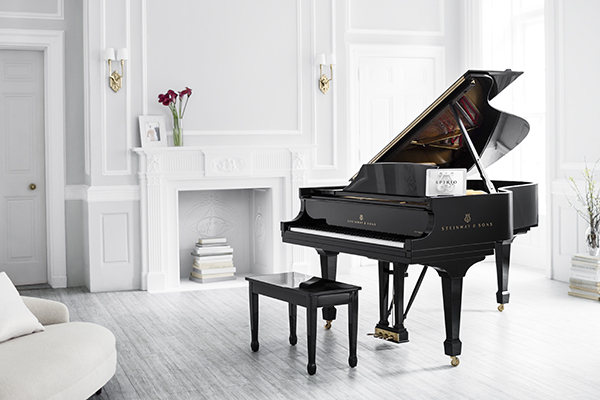Steinway, the gold standard for pianos, is now offering its year-old Spirio player piano in Chicago—for anyone in the market for a self-playing piano with virtuoso-level quality, minus the virtuoso.
Digital-age player pianos already existed, notably the Yamaha Disklavier. Spirio, however, has access to Steinway’s contractually bound artists, such as the flashy, high-selling piano duo Anderson and Roe, who played a launch event this week at Venue SIX10 in the Loop, a space looking as remarkably white as the room from the Spirio promotional shot.
Player pianos have been around since the 19th century. They peaked in the early 1920s, just before record players and the radio elbowed them out of the living room.
Although they never recaptured the popularity of their Jazz Age heyday, player pianos stuck around, and some composers even arranged specifically for piano rolls, such as George Gershwin and Fats Waller. The 20th-century composer Conlon Nancarrow famously wrote piano rolls that humans can’t play with our measly ten fingers and slow brains.
The Spirio, whose player mechanisms stay hidden, is operated wirelessly via iPad. You can play it like a standard piano or you can play its recordings, and you can buy it for a Steinwayish price in the low six figures. (The iPad is complimentary.)
Steinway bills the availability and continual refreshment of its catalog of Spirio recordings by Steinway artists (including Lang Lang and Ramsey Lewis) as a main selling point of the instrument. In this age of digital, a player piano uses technology to instead (re-)create a top-quality analog experience, as close as possible to the hoary old practice of attending a live concert. The Spirio brochure touts 1,020 levels of loud and soft and 256 gradations of pedal position, which Steinway says represents the most nuanced algorithm of any player piano.
Even so, Spirio's aural advantage over its competition might escape average ears. The Yamaha Disklavier plays back with enough nuance that conservatories use it for remote auditions, Fast Company reported last year. But the Spirio is a Steinway, with a full sound up and down its range, the kind of piano in almost every concert hall, and the brand that carries the whiff of the elite. Not to mention that Steinway has hidden Spirio's playback computer and mechanism inside the piano, instead of attached to the corner of the underside like some unsightly barnacle, as the Disklavier has.
At the launch event, Anderson and Roe played several selections, two of which they allowed the Spirio to reprise for them. One of the twice-heard selections was “Mambo” from West Side Story. Subversively, though, the performances highlighted the physical presence of the performers. They gazed dramatically into each other’s eyes during a Piazzolla tango, they dampened strings with their hands, and they contorted around each other to play the far reaches of the keyboard.
During their at-the-bench “Mambo,” they slapped their hands and shouted “Mambo!” In the reprise, watching the Spirio play itself, they implored the audience members to clap and shout “Mambo!” themselves—driving home that you’d have to do that in your living room if you bought a Spirio.




